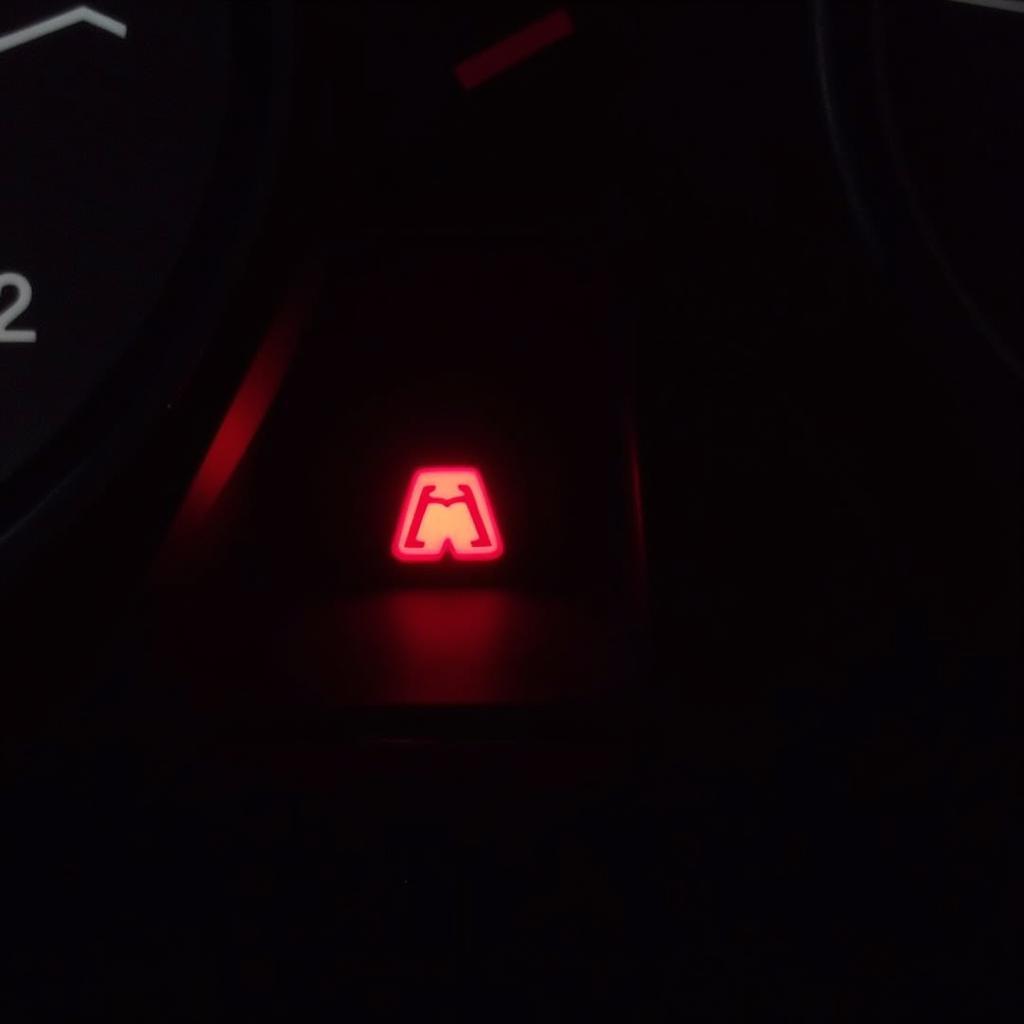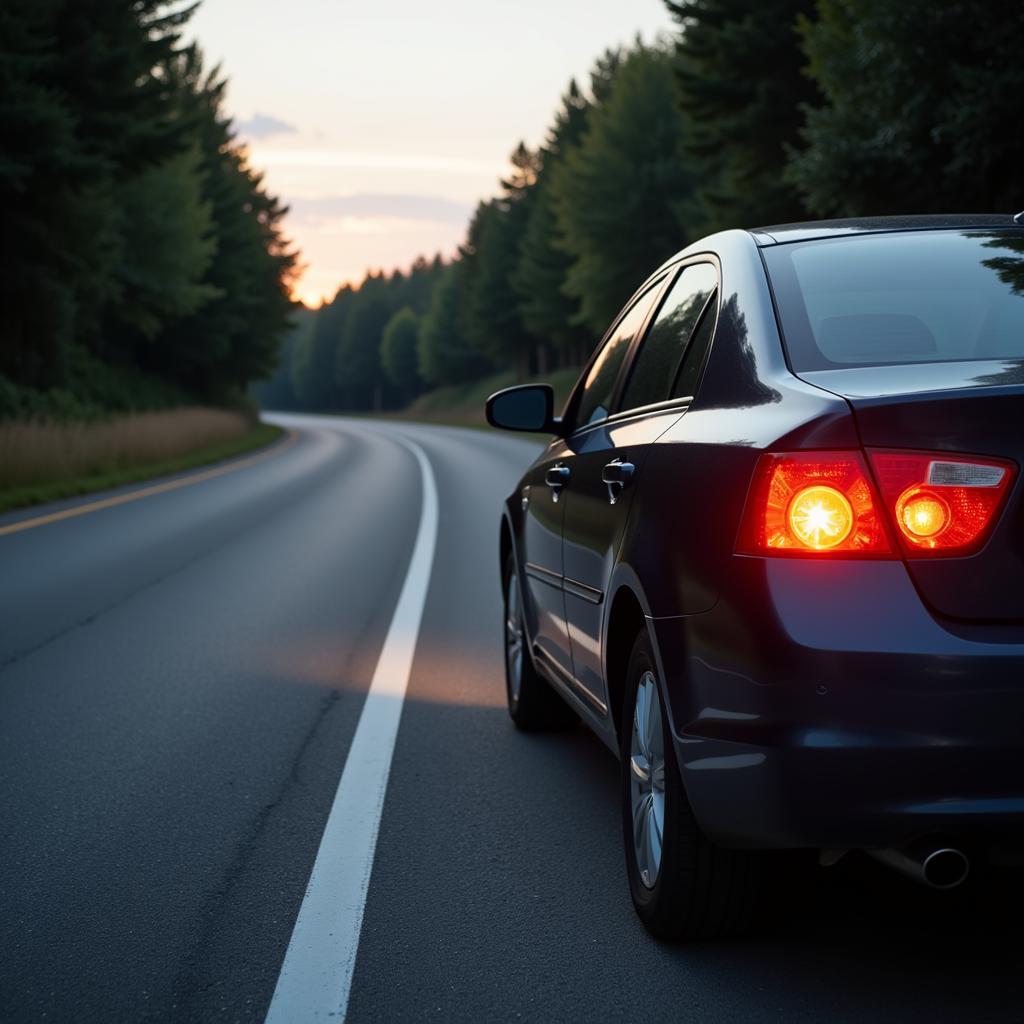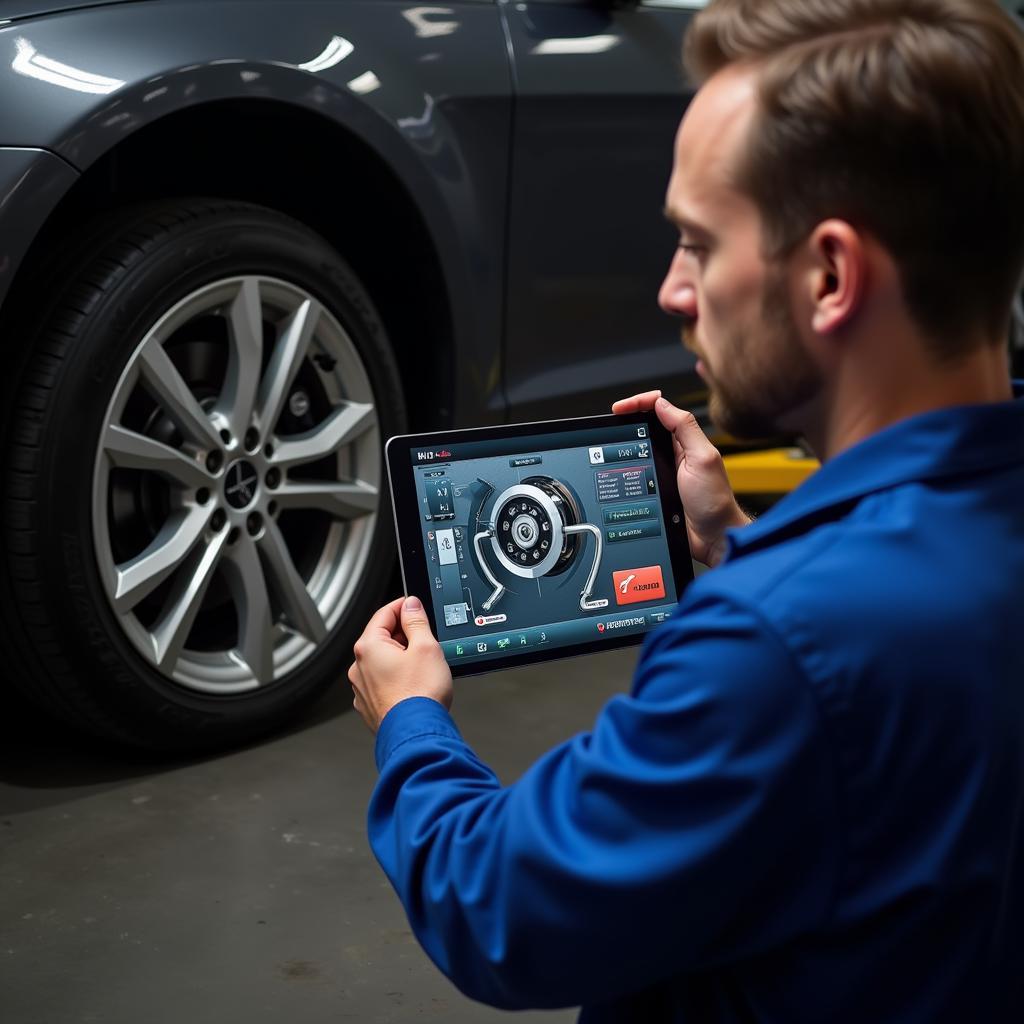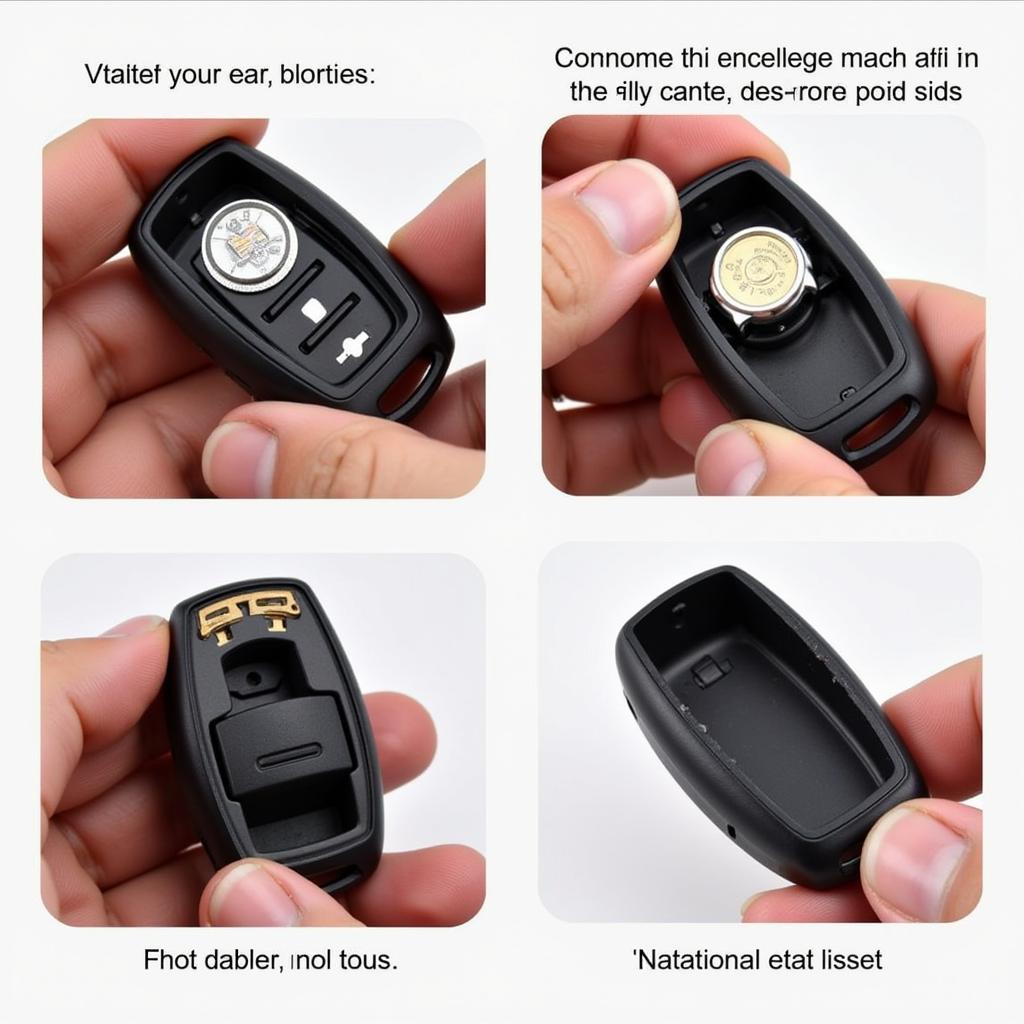That moment when a light pops up on your dashboard, especially one related to your brakes, can be enough to make your heart skip a beat. A brake warning car light is your car’s way of communicating a potential issue with the braking system, urging you not to ignore it. While it can signal something as simple as an engaged parking brake, it can also point to more complex problems requiring immediate attention. This article will guide you through understanding the different brake warning lights, their implications, and the steps you can take to ensure your safety on the road.
Decoding the Brake Warning Car Light
While the exact appearance might vary slightly between car models, the brake warning light typically manifests as a circle with parentheses on either side and an exclamation mark in the center. It might illuminate in red, yellow, or orange, depending on the severity and nature of the issue.
Here’s a breakdown of the common brake warning light variations:
- Solid Red Light: This usually indicates a serious problem with the braking system, such as low brake fluid or a malfunctioning component. It warrants immediate attention, and driving should be avoided until the issue is diagnosed and resolved by a professional.
- Flashing Red Light: This is a more critical warning, often accompanied by an audible alarm. It signifies a complete or near-complete brake failure, requiring you to pull over safely and immediately contact roadside assistance.
- Yellow or Orange Light: This generally indicates a less severe issue, often related to the Anti-lock Braking System (ABS). While you might still have regular braking functionality, the ABS might not engage during emergency braking situations. It’s crucial to have this checked by a mechanic at your earliest convenience.
 Car dashboard displaying brake warning light
Car dashboard displaying brake warning light
Common Causes of a Brake Warning Car Light
Understanding the potential causes behind a brake warning light can be helpful when communicating with a mechanic and understanding the necessary repairs.
Here are some of the most frequent culprits:
- Low Brake Fluid: Brake fluid is the lifeblood of your braking system, transmitting the force from your foot on the pedal to the brake calipers, which squeeze the brake pads against the rotors to slow or stop your car. A leak in the brake lines or a worn-out master cylinder can lead to low brake fluid, triggering the warning light.
- Worn Brake Pads: Brake pads are designed to wear down over time. Most modern cars have wear indicators on the brake pads that emit a high-pitched squealing sound when they become too thin. However, the brake warning light might illuminate if the wear is excessive or the indicators malfunction.
- Faulty ABS Sensor: The ABS prevents wheel lockup during hard braking, helping you maintain steering control. A faulty ABS sensor can disrupt this system, triggering the warning light.
- Parking Brake Engaged: It might seem obvious, but sometimes the simplest explanation is the most likely one. If you’ve accidentally left the parking brake partially engaged, it can trigger the warning light.
- Hydraulic System Issues: The braking system relies on hydraulic pressure to function correctly. Air in the brake lines, a leaking wheel cylinder, or a malfunctioning master cylinder can disrupt this pressure, leading to a brake warning light.
What to Do When Your Brake Warning Car Light Turns On
 Car pulled over on the side of the road with a potential brake issue
Car pulled over on the side of the road with a potential brake issue
Seeing a brake warning light illuminate can be unnerving, but it’s essential to react calmly and take appropriate action:
- Assess the Situation: Is the light solid or flashing? Are there any unusual sounds or sensations from the brakes? Is the car pulling to one side when braking? The more information you gather, the better you can communicate the situation to a mechanic.
- Pull Over Safely: If the light is solid red, especially if accompanied by unusual braking behavior, pull over to a safe location as soon as possible. Continuing to drive could exacerbate the issue and potentially lead to an accident.
- Check the Parking Brake: Ensure the parking brake is fully released. If it was partially engaged, disengaging it might resolve the issue.
- Check Brake Fluid Level: If you’re comfortable doing so, carefully check the brake fluid level in the reservoir. If it’s significantly low, it indicates a leak that needs immediate professional attention.
- Contact Roadside Assistance: If the light persists, particularly if it’s flashing or accompanied by unusual brake behavior, don’t risk driving further. Contact roadside assistance to have your car towed to a trusted mechanic.
Preventative Maintenance for a Healthy Braking System
Like any other part of your car, your braking system benefits significantly from regular maintenance.
Here are some preventative measures to keep your brakes in top condition:
- Regular Brake Inspections: Have your brakes inspected by a qualified mechanic at least once a year or every 12,000 miles, whichever comes first.
- Timely Brake Pad Replacement: Don’t wait for the brake pads to wear down completely before replacing them. Follow the manufacturer’s recommended replacement intervals or consult a mechanic for guidance.
- Brake Fluid Flush: Brake fluid absorbs moisture over time, which can reduce its effectiveness and lead to corrosion within the braking system. Have your brake fluid flushed and replaced every 24,000 miles or as recommended by your car’s manufacturer.
- Pay Attention to Warning Signs: Don’t ignore unusual sounds like squealing, grinding, or scraping when braking. These could be early indicators of brake problems that need attention.
Remote Diagnostics and Software Solutions: The Future of Brake Repair
 Mechanic using a tablet for car diagnostics
Mechanic using a tablet for car diagnostics
As automotive technology advances, so do the methods of diagnosing and repairing car issues. Remote diagnostics and software solutions are rapidly changing how we approach brake repair.
Here’s how these advancements are making a difference:
- Early Detection of Issues: Remote diagnostics can often detect minor issues within the braking system before they escalate into major problems, saving you from costly repairs and potential safety hazards down the line.
- Precise Identification of Faults: Advanced software can pinpoint the exact location and nature of a fault within the braking system, eliminating guesswork and unnecessary component replacements.
- Software Updates and Calibrations: In some cases, brake-related issues can be resolved remotely through software updates or calibrations, minimizing downtime and inconvenience for car owners.
These advancements highlight the growing role of technology in the automotive industry and its potential to make car maintenance more proactive, efficient, and convenient for car owners.
Conclusion
The brake warning car light is a crucial safety feature that should never be ignored. By understanding its different variations, potential causes, and the importance of timely action, you can ensure your safety and the well-being of your vehicle.

